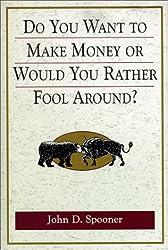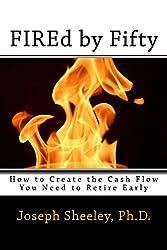 Photo by Liza Summer on Pexels.com
Photo by Liza Summer on Pexels.com
I’m sure you’ve done this: You’re going through your 401k statement or looking through the funds on your 401k firm’s website and you notice that some have done great over the last year or three years, while others have not done so good. Maybe one went up 30% last year, while another only went up 12%. Maybe one didn’t move much at all. You think about how much more money you would have made if you had put it all into the one that went up 30% instead of putting some in the fund that only went up 12%. Or maybe the fund that went up is one that you didn’t even select and now you’re kicking yourself for not buying in. If you’re like a lot of people, you may decide to sell the funds that didn’t do so well and put all of your money in the best performers for the past year, thinking that they’ll lead the pack again. But this would be a mistake.
(Note, this site contains affiliate links. As an Amazon Associate I earn from qualifying purchases. When you click on an affiliate link and buy something, The Small Investor will get a small commission for the referral. You are charged nothing extra for the purchase. This helps keep The Small Investor going and free. I don’t recommend any products I do not fully support. If you would like to help but don’t see anything you need, feel free to visit Amazon through this link and buy whatever you wish. The Small Investor will get a small commission when you do, again at no cost to you.)
In 401k investing, diversification is key. You want to basically own a little bit of everything. Big stocks, small stocks, growth stocks, value stocks, red stocks, blue stocks, hat stocks, shoe stocks. (Sorry, I went a little Suessian there.) The point is that you want to be invested everywhere because you have no ability to predict which segment of the market will be the star performer in the future. This means that today’s stars may be tomorrow’s laggards and vice-versa. This also means that you need to be putting some of your money into some funds that you really don’t want to after looking at their past performance, even if you need to “hold your nose” to do so.

This is my first book, which covers all of the details of how to invest and the risks involved in investing in different types of securities. This is the information you need to know before buying individual stocks or even mutual funds. Even more than that, it tells you what you should be doing at each stage of life to come out financially independent before you retire. Click on the book image above to learn more about it and read an exert on Amazon.
You need to fight your instincts
It is human nature to key in on the best performing funds and want to buy into them. Morningstar’s whole rating system gives out more stars to better performers. The ones that did the best over the last period get five stars, the others get less, with the funds that performed the worst getting only one star. Do you look through Morningstar reports and find the ones with one or two stars to invest in, or the ones with five stars? I’m guess in that most people go for the five-star funds. After all, they are the best, right? 401k management teams are subject to the same mistake, constantly changing from lower rated funds and moving into five-star funds. These lower-rated funds were the five-star funds the last time that a change was made, but the 401k managers don’t seem to remember this.
But if you look back on the history of funds, you’ll find that many of the funds that are five-star funds this year were not last year. You’ll find even fewer that were at the top of the ranking system three or five years ago. You’ll also find that the portion of the market (large caps, small caps, international, growth, value, etc…) that is on top each year varies and varies in unpredictable ways. This means that you are no more likely to buy into the fund that will do the best next year if you buy a five star fund than if you buy a two star fund. In fact, the five star fund probably has a lower probability of being the top performer next year!
As the old axiom says, you want to buy low and sell high, not the opposite. But buying a fund that has done well over the last period means you’re buying stock in a lot of companies that have done really well, making it more likely that they will be overpriced and due for a correction. That means you’re buying high instead of buying low. If you’re selling out of other funds that have not done as well, you may also be selling shares in companies that have gone down, or at least not gone up as much, and therefore be selling low. In addition, because a fund has five stars because it went up a lot last year relative to other funds in the same sector, it means that they likely have a lot of unrealized capital gains. When they sell these stocks, you’ll be on the hook for capital gains taxes for these trades even if you didn’t own the fund when the shares went up in value. You’ll owe the taxes, but not have the gain!

Learn to be a better investor by reading J.D. Spooner’s Do You Want to Make Money or Would You Rather Fool Around? This book made me realize that I wasn’t buying enough shares in the companies I was investing in, meaning my wins were no where near as big as they should have been.
The five-star sector changes
Sometimes one sector of the market will do really well for a long period of time. For example, large US companies have done great over the last decade. This means that if you’ve owned an S&P500 fund, you’ve done really well. If you owned the QQQs, because technology astocks have done especially well, you did even better. If you’ve owned an international fund, by contrast, you’ve seen it sort of just putt along. If you were selecting investments right now, you might see the S&P500 fund or the large cap US growth stock fund and be eager to buy. You may see the international fund and want to pass so that you could load up on the fund that has done well.
But this would be a mistake. You best option would be to invest in both funds, even if you need to hold your nose a bit while putting money away into the international fund right now. While US growth has done much better than international over the last decade, there have been decades where international trounced US stocks. Overall, the returns from both sectors of the markets have done about the same. This means that the international fund is just as likely to outpace the large cap US fund as the inverse is likely to happen. Buy one and not the other, and while you may come out feeling like a hero with a 20% return, you might also come out like a zero with a 5% return. Or a negative 10% return. Buy them both, and you’ll come out with an 11% return either way.

Want diversification without a lot of work? Check out The Bogleheads’ Guide to the Three Fund Portfolio. Learn to build a diversified portfolio of index funds with just three funds.
This does not always apply to managed funds
This idea of buying everything and ignoring performance does not necessarily apply to managed funds. If you’re buying index funds (which you really should) and one fund is not performing as well as other index funds, it means that the particular segment of the market into which the fund invests is not doing well. Over time its performance should average out to that of its particular segment of the market. For example, over 20 to 30 years, a US large cap index stock fund and an international large cap index stock fund should both return around 7% annualized after inflation. During a particular five or even a ten-year period, however, one of these funds might return 15% annualized while the other returns 2%. And you really can’t predict which will return which at the beginning of the period.
Managed funds can be different because you have a manager involved. You might think that this means you have a skilled manager who picks the best stocks and therefore provides an outsized return. Unfortunately, what is much more likely to happen is that the manager, in buying at the wrong times, selling at the wrong times, driving up costs through all of this trading, and being in the wrong sectors of the market, will cause the fund to lag behind the segment of the market in which the fund invests. For example, a manager in a large cap US stock fund may return 5% during a period when the S&P500 index returns 10%. In this case, there is a good reason for the lagging performance other than just the randomness of the market. The manager’s behavior is causing the performance drag, and this is unlikely to change over the next period of time.
Before you can start investing, you need money to invest. Please check out my latest book, FIREd by Fifty: How to Create the Cash Flow You Need to Retire Early

The general solution to avoiding this issue is to not buy managed funds, but buy index funds instead for most segments of the markets. This works great for US large caps and US small caps, for example. There are some segments of the market where you will want a managed fund, however. For example, internationally in small caps there are some places in the world where you really don’t want to invest because the risk from things like revolutions and government corruption far outweigh the potential returns you may get. Another case is mid cap funds since the very process by which indexes are maintained will cause overweight in the larger stocks in the index, so instead of owning relatively equal amounts of a variety of mid cap stocks like you think, you’ll mainly own large positions in smaller large cap stocks and little bits of the other stocks in the index.
In cases like these a skilled manager may be your only choice. With a managed fund, you’ll want to look at past performance as well as just getting a feel for the manager’s style. One warning sign that you have a bad manager is a large turn-over ratio, meaning that the manager is doing a lot of trading. For example, if the turn-over ratio is 100%, it means that the manager is effectively selling everything in the portfolio and exchanging for other stocks on average once per year. This tends to mean that the manager is chasing performance and trying to time the market, a pursuit that is likely to lead to failure. Long-term investing generally leads to over-sized returns, so you’ll want to find funds that have a low turn-over ratio.
Another thing to look for is a fund that always has the sectors top performers in their quarterly reports, yet the fund does not have the type of performance seen by those top performers. For example, the report for the fund shows that the fund is crammed full of stocks that lead the sector and went up over 100% during the quarter, yet the fund return lagged the market sector for the period significantly. If it really had those stocks during the period, it should have beat the index. Since the reports only show what the fund owns at the time that the report is written, and not what they owned between reports, some managers purposely sell their other holdings and buy the top performers just in time for the reports to come out so that it looks like they had the top performers all along. After the report is published, they’ll then sell these same stocks and buy other things. This is selling low and buying high. It also drives up costs with all of the needless selling and buying.
The wealthiest people read a lot of non-fiction books. Don’t have time to read books because of your long commute? Listen to your books in stead with Audible. Free trial at the link below.

Have a burning investing question you’d like answered? Please send to [email protected] or leave in a comment.
Follow on Twitter to get news about new articles. @SmalllIvy
Disclaimer: This blog is not meant to give financial planning or tax advice. It gives general information on investment strategy, picking stocks, and generally managing money to build wealth. It is not a solicitation to buy or sell stocks or any security. Financial planning advice should be sought from a certified financial planner, which the author is not. Tax advice should be sought from a CPA. All investments involve risk and the reader as urged to consider risks carefully and seek the advice of experts if needed before investing.
